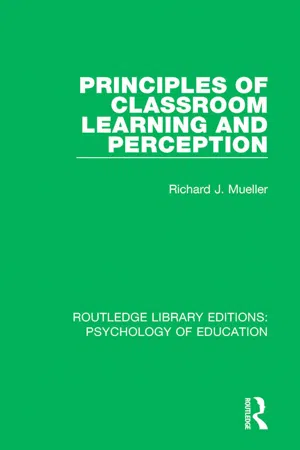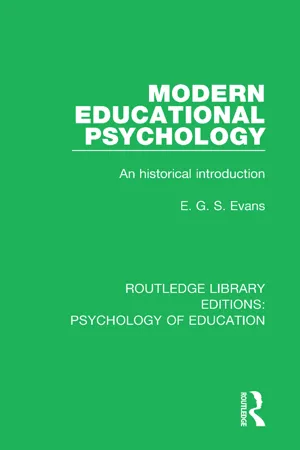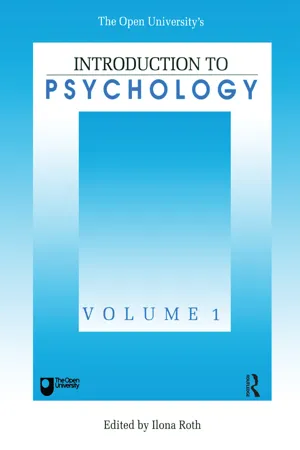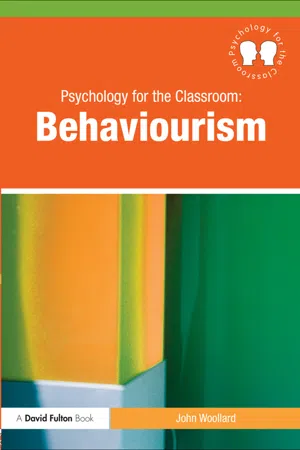Psychology
Edward Thorndike
Edward Thorndike was an influential psychologist known for his work in the field of behaviorism and learning theory. He is best known for his theory of "law of effect," which states that behaviors followed by positive consequences are more likely to be repeated, while behaviors followed by negative consequences are less likely to be repeated. Thorndike's research laid the foundation for the study of operant conditioning and animal behavior.
Written by Perlego with AI-assistance
Related key terms
6 Key excerpts on "Edward Thorndike"
- eBook - ePub
Great Ideas in Psychology
A Cultural and Historical Introduction
- Fathali Moghaddam(Author)
- 2013(Publication Date)
- Oneworld Publications(Publisher)
Through repeated trials testing animals under controlled conditions, Thorndike concluded that the learning exhibited by the cats could be explained without any reference to consciousness, images, or thought. The animal did not suddenly gain insight into the problem and see the solution. If that had been the case, the learning curve would have shown a sudden shift (reflecting a “Eureka!” experience), whereas it showed a gradual slope, suggesting an incremental strengthening of an association between stimuli and response. Rather than try to imagine what might be going on in a cat’s hypothetical mind, it was far better for researchers to study behavior objectively from the outside. This laid the foundation for the behaviorist movement.Another aspect of Thorndike’s research was also worthy of consideration, but it did not receive attention, at least not from radical behaviorism. A fundamental question concerning behavior is its plasticity: how much of behavior can be shaped by the environment? Just as the English philosopher John Locke (1632–1704) had argued that all knowledge comes through the senses, there being no innate ideas, radical behaviorists argued that all behavior is shaped by the environment. However, Thorndike’s research using the puzzle box suggested that some behaviors are easier to shape than others, because there seem to be inbuilt tendencies for some behaviors rather than others to come to the forefront in given contexts. For example, when hungry cats are placed in the puzzle box, grooming is not a prominent behavior in this context, although in other contexts cats spend a great deal of time grooming. Consequently, in the puzzle box context it proved much easier to train hungry cats to push a lever than to groom themselves in order to gain freedom. This was an early experimental demonstration of the limits of the extent to which behavior could be shaped.Another set of experiments started at the end of the nineteenth century proved to be historically important to our understanding of learning; these were conducted by the Russian physiologist Ivan Pavlov. He gained prominence for his research on the digestive system, but his contributions to psychology are even more famous. We need to be cautious in describing Pavlov’s research as “psychological” because in his interpretations Pavlov explicitly excluded references to consciousness and focused only on observable behavior. It is too simplistic to say that he saw himself as a physiologist rather than a psychologist; a more accurate description is that Pavlov assumed all psychological phenomena could be explained biologically. - eBook - ePub
- Richard J. Mueller(Author)
- 2017(Publication Date)
- Routledge(Publisher)
resulting discomfort. When the law of effect is omitted—when habit-formation is reduced to the supposed effect of mere repetition—two results are almost certain. By the resulting theory, little in human behavior can be explained by the law of habit; and by the resulting practice, unproductive or extremely wasteful forms of drill are encouraged. [Thorndike, 1913, p. 22.]Thorndike believed that learning was largely a matter of “stamping in” correct responses and “stamping out” incorrect responses as a result of, respectively, rewarding or annoying consequences. Thus, he postulated the Law of Effect, which held that the learner would tend to repeat, and therefore learn, those responses which are followed by satisfying consequences and that adverse aftereffects (punishment) or the absence of aftereffects would lessen the tendency for the individual to repeat behavior.Although Thorndike originally assumed that reward and punishment work in “equal and opposite” ways, he later concluded that punishment was relatively ineffective. As we shall see, research on this subject has shown that punishment, in fact, has variable effects. For example, punishment produces a temporary suppression of activity in rats; but, after punishment is terminated, punished animals require more trials to extinguish their behavior than those that have not been punished.Thorndike’s experiments with animals had a profound influence upon his theories of how people learn. Because he considered the essential nature of animal learning to be associationist, he tended to believe that animals lacked a capacity for ideas. With humans, too, Thorndike tended to minimize the ideational functions. Although his theories regarding learning no longer occupy the center of the field of psychology, and although some of the teaching practices to which he lent support—for example, strong emphasis on drill—are now considered obsolete, nevertheless the influence of Thorndike’s associationism is still present in both theoretical formulations and classroom practices.CLASSICAL CONDITIONING AND RESPONDENT BEHAVIOR
Not all human behavior is a result of conscious learning. If a person touches a hot stove, he is likely to withdraw his hand hastily. Food placed in the mouth produces the response of salivation. These are unlearned responses, but under some circumstances we might respond in the same way to a different set of stimuli. A sharply spoken “Hot!” produces a quick withdrawal of the hand, even though the command in itself is not painful or dangerous. At the end of a long day of teaching active adolescents in the classroom, just hearing the words “broiled steak” or “dry martini” may cause the teacher to salivate a little. In other words, when one event evokes a particular response and that event happens often in the presence of another event, or stimulus, then the second stimulus alone will come to elicit the same response. This is called classical conditioning. - eBook - ePub
Modern Educational Psychology
An Historical Introduction
- E.G.S. Evans(Author)
- 2017(Publication Date)
- Routledge(Publisher)
The general position concerning transfer, therefore, may be summarized by saying that although transfer of training is an established fact, the gains are nowhere as great as was formerly supposed. Thorndike’s studies revealed that while the learning of simple motor skills and some school subjects showed greater improvements than others, the transfer effects were usually extraordinarily low. Moreover, when gains did occur, they appeared to depend more on specific teaching methods and the general intellectual ability and motives of the learners, rather than on any disciplinary virtues inherent in the actual subjects. In other words, given good teaching and high intelligence, training in almost anything will develop specific habits, attitudes, skills and techniques of work which will effectively transfer to other activities. On the other hand, however, complex psychological functions like perception, memory and reasoning processes do not appear to be capable of direct training and transfer—unless they are conceived in terms of highly specific habits and skills acquired or otherwise learned by the individual and similar to those that have just been mentioned.The influence of E. I. Thorndike on educational psychology both in America and Britain is so well known that little need be added to what has already been written about it. From 1900 onwards his ideas and experiments on the acquisition of skill, trial-and-error learning and the transfer of training were discussed and repeated by psychologists everywhere. They had a profound and stimulating effect on J. B. Watson (1928) and the development of the behaviourist system of psychology in the period 1909–1919; they also contributed greatly to the formulation of later behaviourist theories of learning conceived in terms of stimulus-response relationships, of which Hull’s theory of reinforcement based on the fact of conditioning and Thorndike’s law of effect, is undoubtedly our best example at the present time.Watson and BehaviourismAt the beginning of the twentieth century experimental psychology in America, like its counterpart in Germany, was concerned mainly with the study of conscious experience—with understanding man’s sensations, feelings, memories and thoughts—and in attempting to analyse these into their basic components. Under the influence of J. B. Watson (1878–1958), however, all this changed and instead of dealing with the analysis and synthesis of mental states and processes, American psychology became sharply orientated towards the study of objective behaviour, with a strong emphasis on the practical usefulness of its results. - eBook - ePub
- Ilona Roth, Ilona Roth(Authors)
- 2021(Publication Date)
- Psychology Press(Publisher)
- (c) every time a cat owner goes to open a tin of cat food and (i) to give it to the cat, (ii) she first reaches to a high shelf for a can-opener. In time the cat starts to show signs of excitement whenever the owner reaches up to the top shelf.
Thorndike argued that a simple principle of learning, that of forming S—R associations, could explain much, if not all, of what animals and humans learn. He believed that complex behaviour called intelligent or creative could really be reduced to learning a number of simple S–R associations. For example, according to Thorndike, the cats were not showing insight in escaping from the puzzle box. In arguing the case for seeking common principles of learning applicable between different species, Thorndike was an important influence in the development of comparative psychology. In the spirit of Darwin (Chapter 5 , Section 3.2 ), Thorndike tried to break down the fundamental dichotomy between animals, seen to be endowed simply with blind instincts, and humans, having a creative and intelligent capacity. Watson emphasized the importance of classical conditioning and Thorndike pioneered instrumental conditioning. To both Watson and Thorndike, animal and human behaviour and learning could be explained largely in terms of S—R connections.The instrumental contingency pioneered by Thorndike was soon to occupy the attention of a number of distinguished researchers.Summary of Section 3- • Thorndike’s puzzle box was the apparatus for the first scientific study of instrumental conditioning, a type of conditioning fundamentally different from classical conditioning. In this apparatus, escape and food were contingent upon a manipulatory response by a cat.
- • An instrumental contingency is one in which an animal’s behaviour is instrumental in determining some outcome. There is a contingency between a response and a reinforcer.
- eBook - ePub
- Gregory A. Kimble, Michael Wertheimer, Charlotte L. White(Authors)
- 2014(Publication Date)
- Psychology Press(Publisher)
*Photograph of Edward L. Thorndike courtesy of the Archives of the History of Psychology, Akron, OhioChapter 10 Edward L. Thorndike: A Professional and Personal Appreciation Robert L. ThorndikeWhen I was born my father was already 36, and by the time I had much awareness of his professional activities he was well into his 40s. I have vague memories of his commuting to Washington during the first world war on war work, but most of my memories postdate that war. So any personal knowledge is only of the latter half of his career when he was already a substantial figure, in the eyes both of psychology and of his bathroom scales. I must rely on printed sources and family legends for his early days.I remember my mother’s telling about the first year of her married life, when the New York City apartment was shared with four active monkeys. She claimed that this was prophetic of the four of us who came on the scene over a span of 16 years. I remember the tale, probably apocryphal, of the cat that escaped from its cage and went up into the rafters of Schermerhorn Hall at Columbia with my father in hot pursuit. The fate of the cat is better not reported.My older brother has told me that he knew my father as a contentious, combative, and subtle tennis player. But by the time that I remember him, his tennis was still sneaky but largely stationary. He is pictured in Geraldine Joncich-Clifford’s biography as quite a feisty and contentious young man, challenging the psychological establishment of that time, but my memory is of a gentle, retiring person who avoided contention and conflict and who felt that controversy was unproductive, who would rarely respond to critical attacks but would rather get on with collecting more data.Though he appeared in his writings and in reactions to them as a Connectionist, he was not by temperament a systematist but rather an empiricist, a conductor of investigations and an analyzer of data. His approach to learning was an outgrowth of 19th-century associationism tempered by the microneurology of the turn of the century. He was impressed by the emerging picture of the neuron with its multibranching dendrites, implying a multitude of neural pathways, but he did not presume to delve into neurology and the details of the central nervous system, and it remained, in large part, a “black box” whose operations he accepted as reported to him. Ultimately, he defined a “connection” at the behavioral level as the probability of making some specific response to a particular stimulus situation. - eBook - ePub
- John Woollard(Author)
- 2010(Publication Date)
- Routledge(Publisher)
Behaviourism offers teachers the power to determine the pre-conditions for learning by impacting upon the preparedness of learners for the learning experience, to make more efficient methods of learning through behaviourist procedures of repetition, reinforcement, shaping and modelling and to make the curriculum more accessible through task analysis and sequencing. In this chapter, the emerging theories of behaviourism are described.A theory is an unproven conjecture or hypothesis that gives a tentative insight into a complex situation through to a well-substantiated explanation of that complex situation. A theory can be a coherent set of statements or a logical structure that attempts to explain or represent observed phenomena in the form of facts, observations or events. Those statements of the expectation of what should happen, barring unforeseen circumstances, can be used to predict what might happen. A theory can never be established beyond all doubt. It is in that light that the theories and postulates of the major psychologists are presented.The theorists that have important statements to make about education begin with Pavlov and Watson and their work on animals that Pavlov extended to explain human behaviour. By the 1920s Watson had left academic psychology, and other behaviourists were becoming influential, proposing new forms of learning other than classical conditioning. Skinner’s theory of operant conditioning followed upon Thorndike’s work with animals and his laws of conditioning. Skinner acknowledged the processes of the mind but considered it simply more productive to study observable behaviour rather than pontificate about internal mental events. He concentrated on the causes of an action and its consequences, coined the phrase ‘operant conditioning’ and described the processes and applications of behaviour modification. Albert Bandura is the link between the behaviourist focus upon behaviour and the cognitive discourse on mental processes (1969).Classical conditioning
Ivan Pavlov, the Russian physiologist, carried out Nobel Prize-winning work in the field of digestion. One particular study involved collecting the saliva from dogs as they were restrained in an experimental chamber. Tubes were surgically implanted into the saliva glands so that when food was shown to the dogs, the saliva could be collected for study. Pavlov noticed that the saliva sometimes appeared before the dog saw the meat, and he made the connection that the dog anticipated the arrival of the meat by perhaps the clicking of the mechanism for dispensing the food or the arrival of the experimenter. He called the phenomenon psychic reflex. Pavlov then experimented by making the delivery of the food coincident with another stimuli, the ringing of a bell being most commonly stated. Before the experiment the ringing of the bell did not cause salivation; it, in those circumstances, is a neutral stimulus. During the conditioning phase, the bell becomes associated with the arrival of food and the dogs salivate. After conditioning, when the bell is rung, even without the presence of food, the dogs salivate. This association between a neutral stimulus and a response is called classical conditioning. Pavlov dedicated much of the rest of his life to extending these findings and extrapolating them to the human condition (Pavlov, 1927). He studied similar reflexes, the automatic behaviour that is caused by a stimulus from the environment. For example, the blinking of the eye is a reflex reaction in response to a visual or physical movement near the eye, as is a baby’s suckling movement when something is placed in their mouth. His theories focus on observable behaviour and the manipulation or conditioning of those reflex actions, arguing that behaviour can be measured and thought cannot; evidence is the keyword in his theorising. In his work, it can be considered that the human mind is a ‘black box’ that cannot be opened. It is only what goes into the box and what comes out of the box that can be known and reported with scientific rigour. This is an underpinning principle of the behaviourist movement in psychology.
Learn about this page
Index pages curate the most relevant extracts from our library of academic textbooks. They’ve been created using an in-house natural language model (NLM), each adding context and meaning to key research topics.





